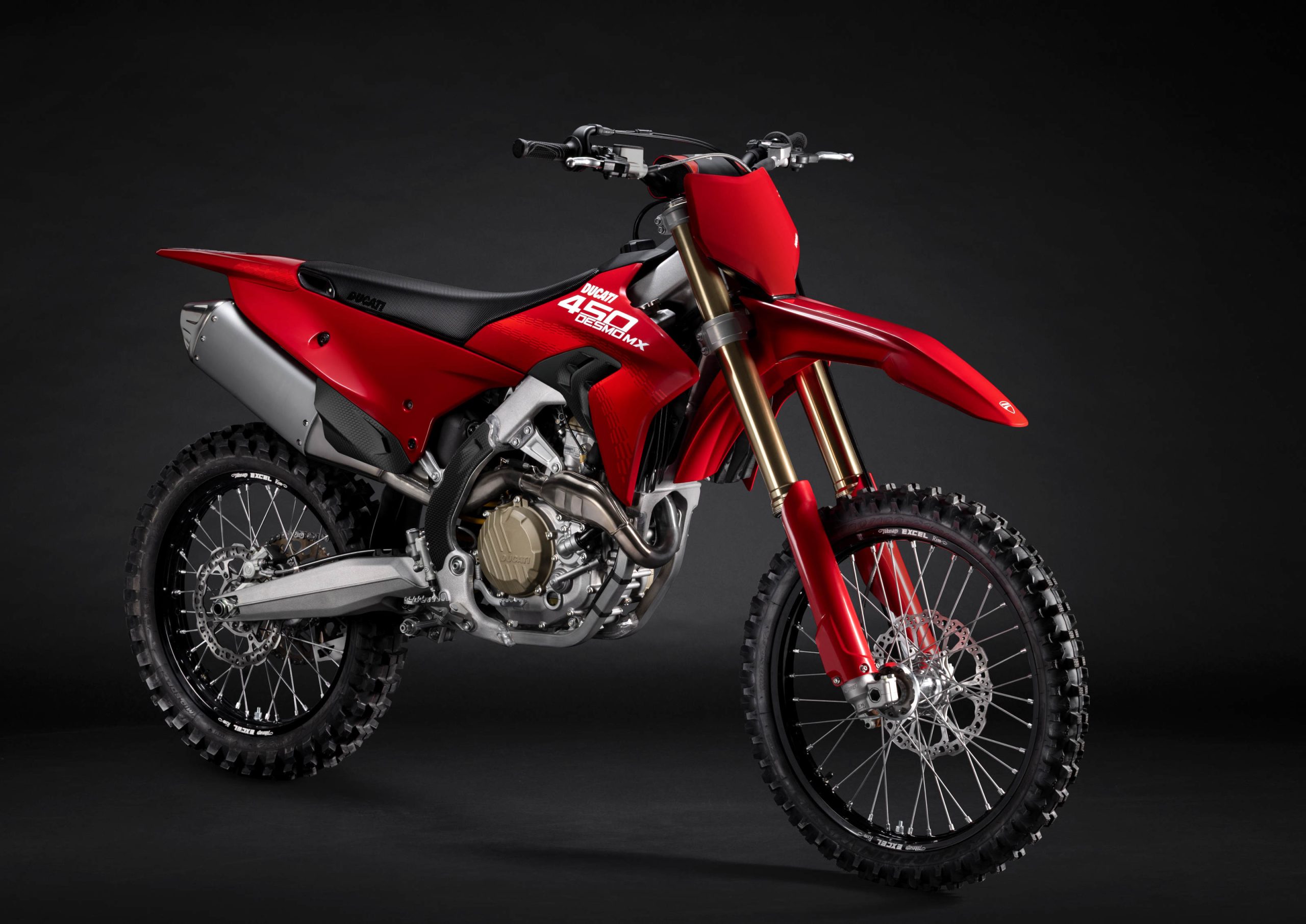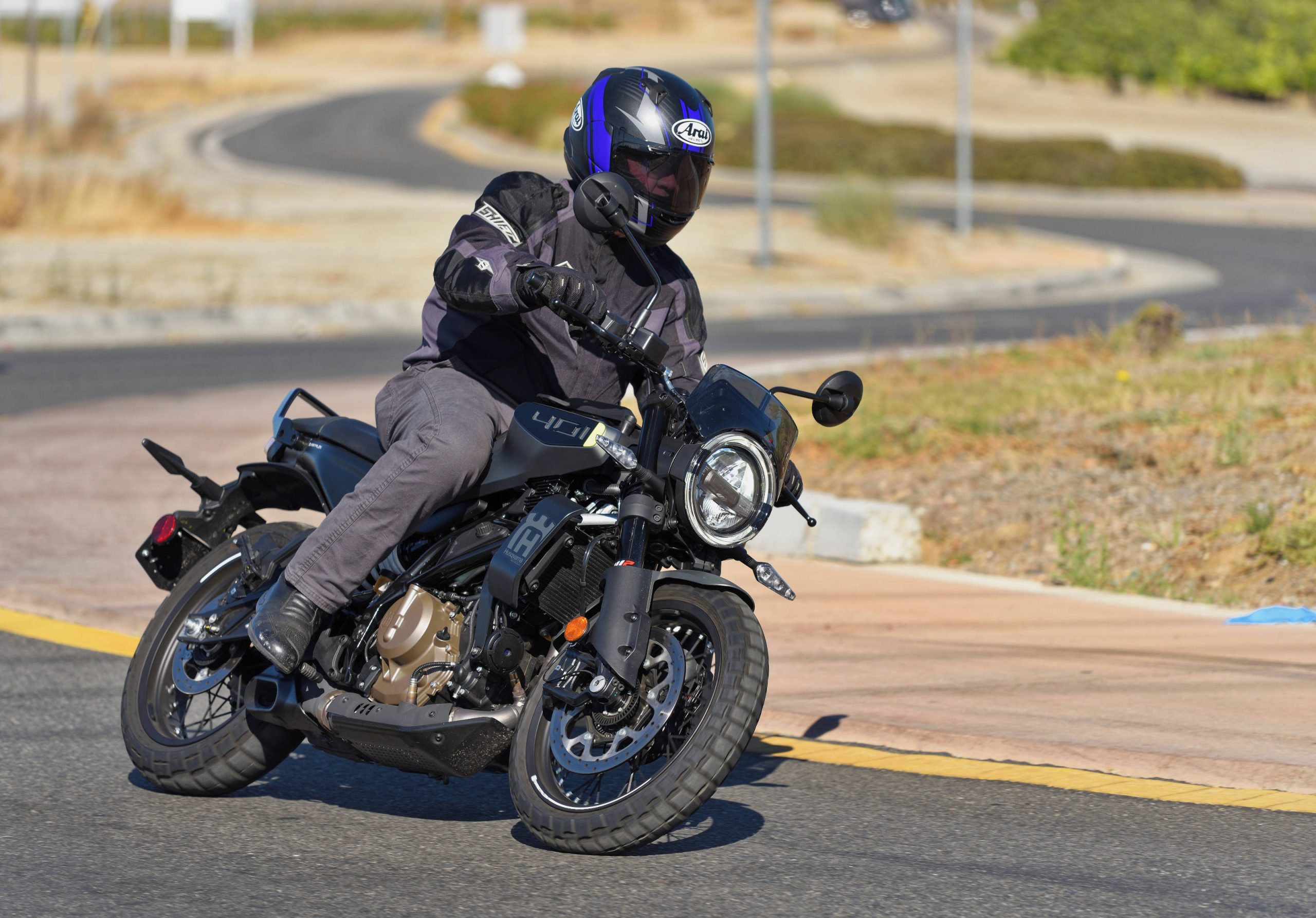
Am I the only one who has dreamed of a modern, high-performance engine cooled by the wind? Yes, air-cooled, without all the plumbing, space and weight of a liquid-cooled design. More important, with the emotional appeal of cooling fins.
Apparently, I am not alone. Ducati has spent considerable R & D money designing the 1000cc (actually 992cc) Dual Spark engine, which will be found not only in the Multistrada, but in a version of the Monster and the Supersport, as well.
Ducati finds a large market for its bikes featuring air-cooled engines, so the 1000 DS was worth the investment. Larger valves, forged crank, trick connecting rods, and two spark plugs per cylinder (as the name implies) raise performance considerably from last year’s top-drawer air-cooled engine.
We hope to get our hands on the new Monster 1000 (and, eventually, the Multistrada) for a good test. In the meantime, take a look at Ducati’s own, rather thorough discussion of its new “old school” engine.
THE 1000cc “DUAL SPARK” ENGINE (SS1000 DS & M1000i.e. S)
THE ESSENTIAL DESIGN
In technical terms, the 1000 DS is an all-new 90 L-Twin power plant. The design starts with a completely new cylinder head, big-bore, short-stroke design and further innovations that extend to the very heart of the motor: the crankshaft.The design goal was clear: increase total power, boost mid-range power, simplify mechanicals, lower engine temperatures, raise reliability, lower emissions and lighten weight. These solutions would tap the minds of our very best engineers, utilize all of our racing experience and express the peak of Ducati “know-how.”
THE DUCATI AIR COOLED ENGINE
The 90 Desmo L-Twin, two valve, air-cooled engine is the most well-known and widely used power plant in the Ducati family of motorcycles. Although the Desmoquattro and Testastretta L-Twin liquid cooled engine powers all of our Superbike and Sport Touring families, the air-cooled L-Twin remains as equally important to the Ducati philosophy of motorcycling.An air-cooled engine has significant design and application advantages in many motorcycles. The most obvious is the relative simplicity and lighter weight of an air-cooled motorcycle versus its liquid cooled counterpart. There are no radiators, water pumps, hoses, venting tubes, reservoirs, or the need to compromise the placement of ancillary components displaced by the liquid cooling system.
This straightforward, no-nonsense approach is in itself an attraction for many enthusiasts. Maintenance on an air-cooled engine is also simplified and therefore the long-term cost of ownership is lower. Of course, to many the beauty of air-cooled engine, with its traditional cooling fins and purposeful look, is as an important factor as any. “It makes my bike look like a ‘real’ motorcycle”.
THE 90 L-TWIN PHILOSOPHY
With the most experience and success with twin cylinder performance engines than any other manufacturer in the modern era, Ducati has brought the design to a high art form. The Ducati commitment to the L-Twin design is based on our conviction that its configuration is the soundest engineering approach to powering a motorcycle. Compact, efficient and powerful, the twin cylinder motor has endured as the common-sense means to powering a motorcycle since the first bikes appeared almost 100 years ago.Confirmation of the twin’s continuing validity is the fact that the winning motorcycle in every race this year in the World SuperBike Championship has been powered by a twin cylinder engine, no matter who the manufacturer. A point of fact not lost on our worthy competitors as more and more attempt to switch the twin cylinder design. As others try to “catch-up,” Ducati continues to lead the way. Desmodromic valve actuation, fuel injection, computer engine management and now the new 1000 DS (Dual Spark) engine just keep pushing Ducati farther ahead of the pack.
CYLINDER HEADS
Starting with the cylinder heads, ignition is now accomplished with twin spark plugs and the conventional method of supporting the camshafts with ball bearings has been replaced with oil pressurized plain bearings. The dual spark design, due to its “double flame front”, offers more complete combustion, increased power-especially in the mid-range-and greater fuel economy. The advantages of plain bearing camshafts to the Desmodromic motor are many, including a reduction in the number of moving parts, which increases reliability and reduces weight. In fact, the result is an amazing reduction of more than 1.5 kg / 3 lbs. per cylinder. Additionally, the new approach reduces heat and aids in heat dispersion.A substantial reduction in valve angle degrees between the intake and exhaust has created a more “compact” head. The more compact design has many advantages. It allows a more optimal shape to the combustion chamber resulting in more complete fuel combustion, higher compression and more power. The new more efficient combustion chamber allows the use of a “lean” fuel / air mixture without damaging high temperatures and significantly reduced HC emissions. The new configuration also places the camshafts in a more direct relationship to the valves, lowering friction and stress to valve components and consequently increasing reliability. Although more compact, the new head gives more room for the valves.
With the combined benefits of the new cylinder heads, Ducati engineers can now be more radical in valve size and cam design compared to the previous air-cooled engines. Intake and exhaust valves are now increased to 45mm vs. 43mm and 40mm vs. 38mm respectively. The new valves are lighter, due to the 7mm stems (the same as our Superbike engines), even though the working diameter of the valves has increased. Further improvements include new valve seats made of beryllium bronze, an advanced material previously used only on racing engines. The new valve seats have improved heat dispersion and low wear characteristics, thereby maintaining valve clearance more accurately over time. The bigger valves are also matched to more extreme camshafts. Additionally, the cylinder head is now sealed to the cylinder via a special metal gasket. The gasket improves sealing, increases heat transfer, eliminates o-ring seals and simplifies assembly. Complimenting the new valve layout are larger intake and exhaust ports. Additionally, the exhaust port length has been shortened by an incredible 40%, further aiding in the reduction of engine temperatures by exiting exhaust gases from the cylinder head more quickly. The manufacturing process of the cylinder head is also new. It is now “gravity chilled” with the combustion chamber facing down. As a result, the first aluminum poured forms the combustion chamber and cools quickly, ensuring better molecular structure (smaller aluminum grains) to the chamber.
CYLINDERS & PISTONS
Another design criteria was to allow the engine to make power over a wider range. In addition to the new cylinder head, a longer piston stroke contributes significantly to power output. To ensure broad mid-range power, the crankshaft, cylinder bore and piston have been modified to achieve a 94mm bore with a 71.5mm piston stroke, vs. the former 92mm x 68mm of the 900cc engine. The pistons now feature “nitrided” steel rings with a high sealing ability that essentially eliminates oil consumption. The cylinder barrel is now thicker, making it more rigid and more resistant to deformities while tightening down the cylinder. This results in improved piston and ring-to-cylinder sealing. Two extensions (fins) have been added to the lower cylinder as a means of better supporting the piston at BDC (bottom dead center).Lower engine temperatures and reliability have been further advanced thanks to the new shape, placement and a greater number of cooling fins. The new shape, essentially an exaggerated pyramid, has a greater mass (greater heat sink qualities) at the source of heat (combustion chamber and cylinder liner) to conduct heat away from the source more rapidly. The fins then grow gradually thinner (lighter) as they extend away from the heat source while maintaining the same surface area (the ability to transfer heat to the atmosphere).
CRANKSHAFT & CONNECTING RODS
The 94mm pistons are linked to the crankshaft with new connecting rods, made from a new material composition (30NiCrMo4) that has exceptional flow characteristics during forging. This allows Ducati engineers to design a more optimal shape to the connecting rod cross section because of the consistent and flaw-free characteristics of the new material during the forging process. In cross section, the new rod is thinner side-to-side, but wider fore-to-aft (a more advanced I-beam) which is stronger and lighter for increased reliability and performance. Additionally, the rods have been mechanically and chemically surface stress relieved resulting in a smoother and imperfection-free surface for higher reliability and strength. A new forged crankshaft was also called for. Its has a new shape that allows for a more centralized mass, and oil delivery ports that are positioned in less structurally critical areas. The result is a crankshaft that is more rigid and has less flex, adding to lower vibration and higher reliability.TIMING
The timing belt gears now have 20 teeth (versus the former 18 teeth) for improved belt routing. Also, new timing belt tension rollers have built-in bearings with improved grease seals. Crankshaft / camshaft timing and gear mounting have also been improved and simplified, ensuring rapid and accurate assembly.LUBRICATION
The lubrication system has also been updated. The 1000 DS engine now runs significantly higher oil pressure and volume, achieved with the use of a new oil pump and oil channels. The higher oil pressure is required by the plain bearing camshaft, but also aids significantly in engine cooling and reliability.CLUTCH & TRASMISSION
The clutch basket, drive plates and driven plates have also been improved and updated. Both the basket and plates are now made entirely out of a special aluminum alloy. The service life of the new lighter clutch is much greater, due to the more balanced wear factor of aluminum alloy to the friction pates. The clutch is also quieter due to improved tolerances and the lower resonance value of aluminum versus steel. Even the transmission output shaft (layshaft or countershaft) has been improved with the use of a double row bearing on the chain sprocket side for improved durability and strength. Furthermore, the countershaft sprocket is now mounted on the splined counter shaft via a single large nut, versus the former method that used two screws.





